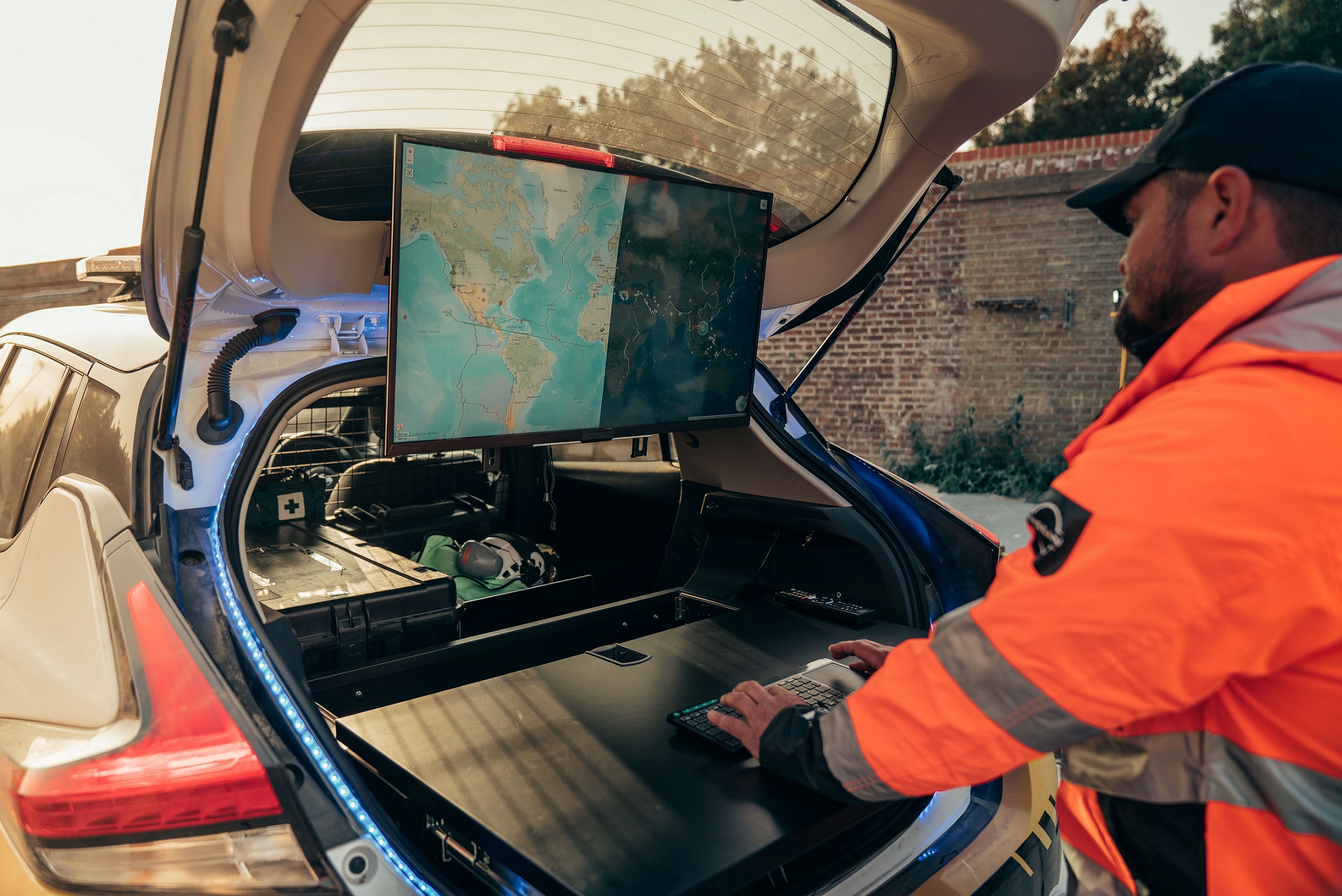Nissan today unveiled a 100% electric emergency response vehicle concept, designed to provide a mobile power supply following natural disasters or extreme weather.
The RE-LEAF1working prototype is based on the Nissan LEAF passenger car, the world’s first mass-production electric car.
Alongside modifications to navigate roads covered in debris, the RE-LEAF features weatherproof plug sockets mounted directly to the exterior of the vehicle, which enable 110- to 230-volt devices to be powered from the car’s high-capacity lithium-ion battery.
The RE-LEAF can be driven into the center of a disaster zone and provide a fully mobile power supply to aid the recovery process. The integrated energy management system can run medical, communications, lighting, heating and other life-supporting equipment.
“We’re constantly exploring ways that electric vehicles can enrich our lives, beyond just zero-emission transportation,” said Helen Perry, head of electric passenger cars and infrastructure for Nissan in Europe. “Concepts like the RE-LEAF show the possible application of EVs in disaster management and demonstrate that smarter, cleaner technology can help save lives and provide greater resilience.”
Real-world applications of EVs during disasters
Natural disasters are the biggest cause of power outages. A2019 World Bank report found natural shocks and climate change caused 37% of outages in Europe between 2000 and 2017, and 44% of outages in the U.S. over the same period.
When a disaster hits, the time for electricity supply to be restored is typically24 to 48 hours, depending on the severity of the damage. During that period, electric vehicles can provide zero-emission mobile emergency power.
Nissan created the RE-LEAF to demonstrate the potential of electric vehicles in disaster recovery. Although it’s just a working concept, the technology is already being used in the real world. In Japan, Nissan has used the LEAF to provide emergency power and transportation following natural disasters since 2011, and the company has formed partnerships with more than 60 local governments to support disaster relief efforts.
Nissan EVs can also act as mobile storage batteries to supply homes and society with electricity during non-emergency situations through Nissan Energy Share, creating a distributable energy model that can be used to help stabilize supply and demand.The RE-LEAF uses the LEAF’s bidirectional charging ability, a standard feature of the model since its introduction in 2010. This means the LEAF can not only “pull” power to recharge the high-capacity battery, but also “push” it back to the grid through V2G(Vehicle-to-Grid) technology, or directly to electric devices through V2X (Vehicle-to-everything).
Improving resilience with EVs
Acting as a portable power station, the latest generation Nissan LEAF e+ with a fully charged 62 kilowatt-hour battery can provide enough electricity to power the average European household for six days.
As a disaster recovery vehicle, the RE-LEAF can power multiple devices simultaneously. Here are some examples based on 230-volt power use:
- Electric jackhammer – 24 hours – 36kWh
- Pressure ventilation fan – 24 hours – 21.6kWh
- 10-liter soup kettle – 24 hours – 9.6kWh
- Intensive care medical ventilator – 24 hours – 3kWh
- 100-watt LED floodlight – 24 hours – 2.4kWh
Once electricity is restored to the area, EVs can be recharged and provide zero-emission transport – up to 385 kilometers2on a single charge of a LEAF e+ battery.
“Electric vehicles are emerging as one of the technologies that can improve resilience in the power sector,” Perry said. “By having thousands of EVs available on standby, either as disaster support vehicles or plugged into the network through Vehicle-to-Grid, they’re uniquely capable of creating a virtual power plant to maintain a supply of energy.”
1) The “RE” refers to three elements of disaster preparedness: response, recovery and resilience
2) WLPT standard
To learn more about Nissan’s EVs, visit https://global.nissannews.com/en/channels/channel-NNG1440
For more information about our products, services and commitment to sustainable mobility, visit Nissan AMI. You can follow us on Facebook, Instagram, Twitter and LinkedIn and see all our latest videos on YouTube.



